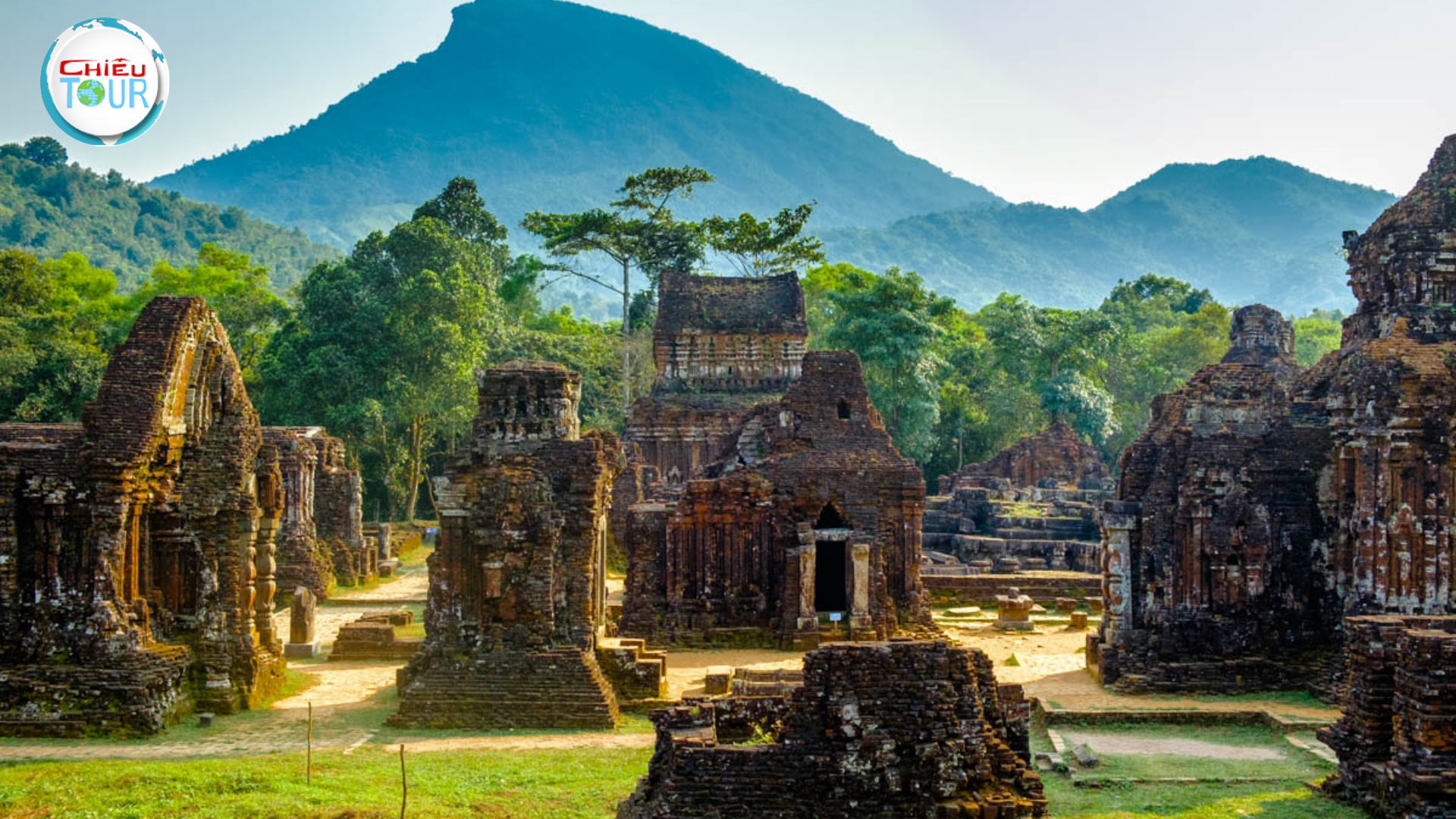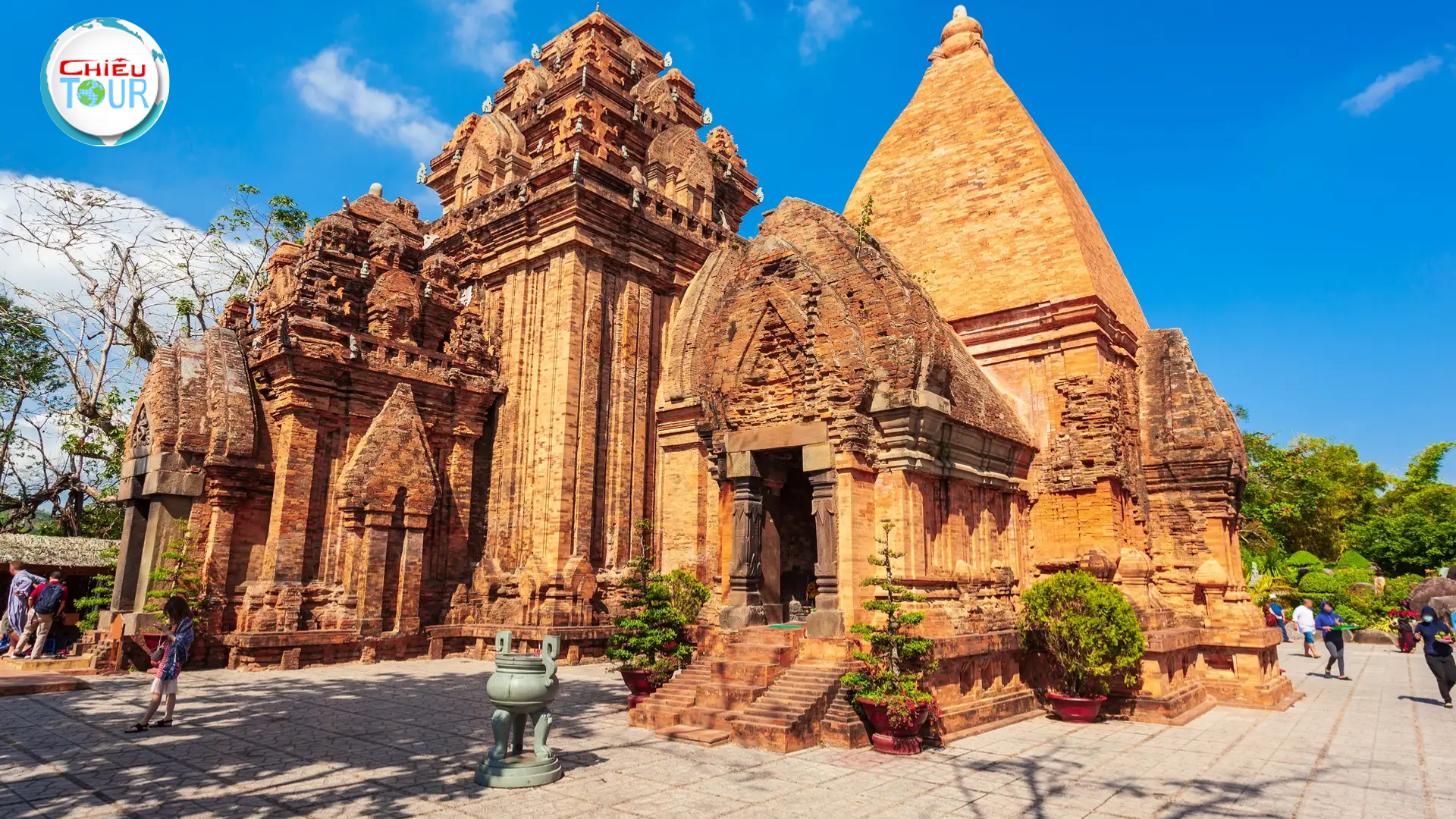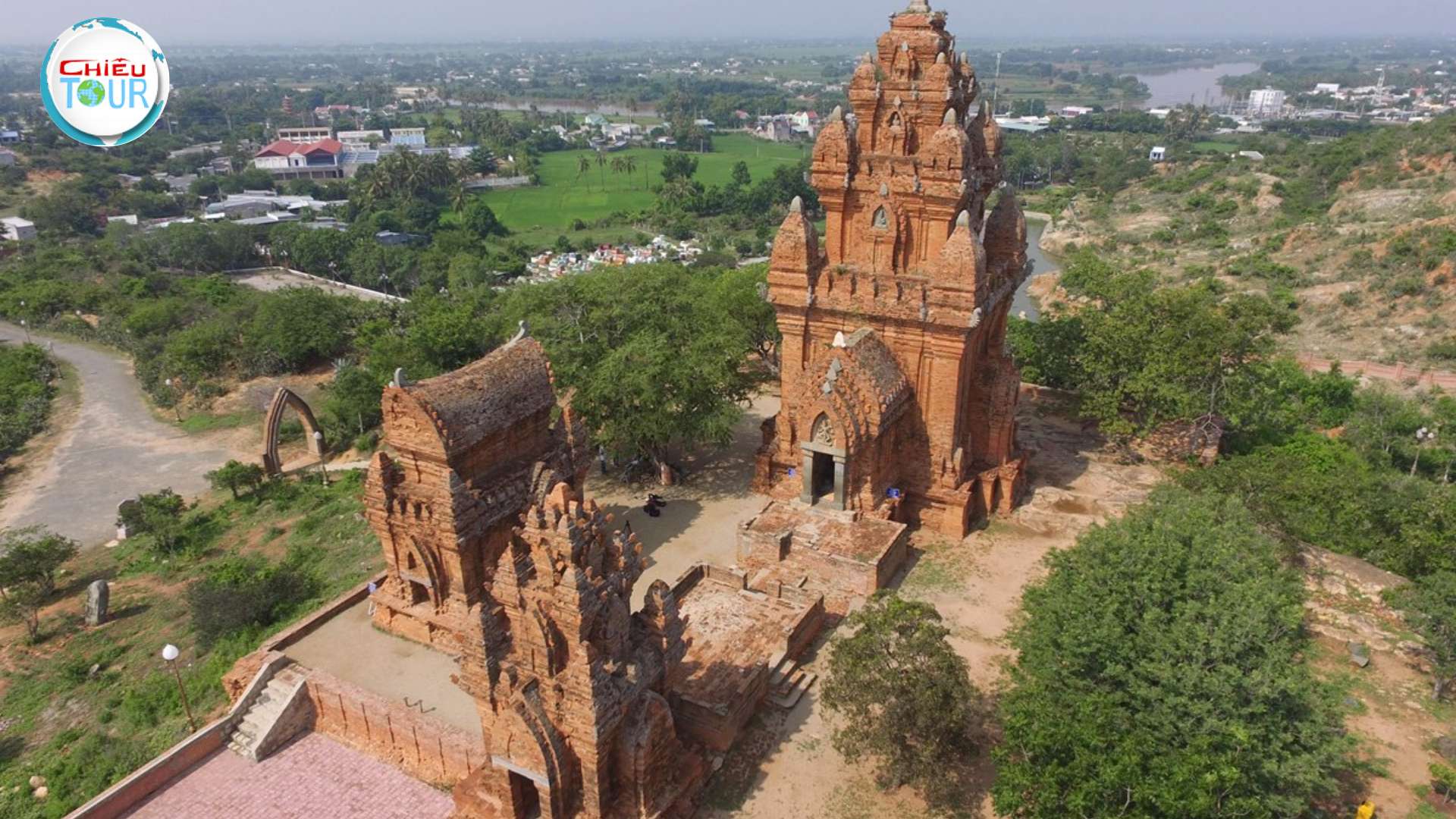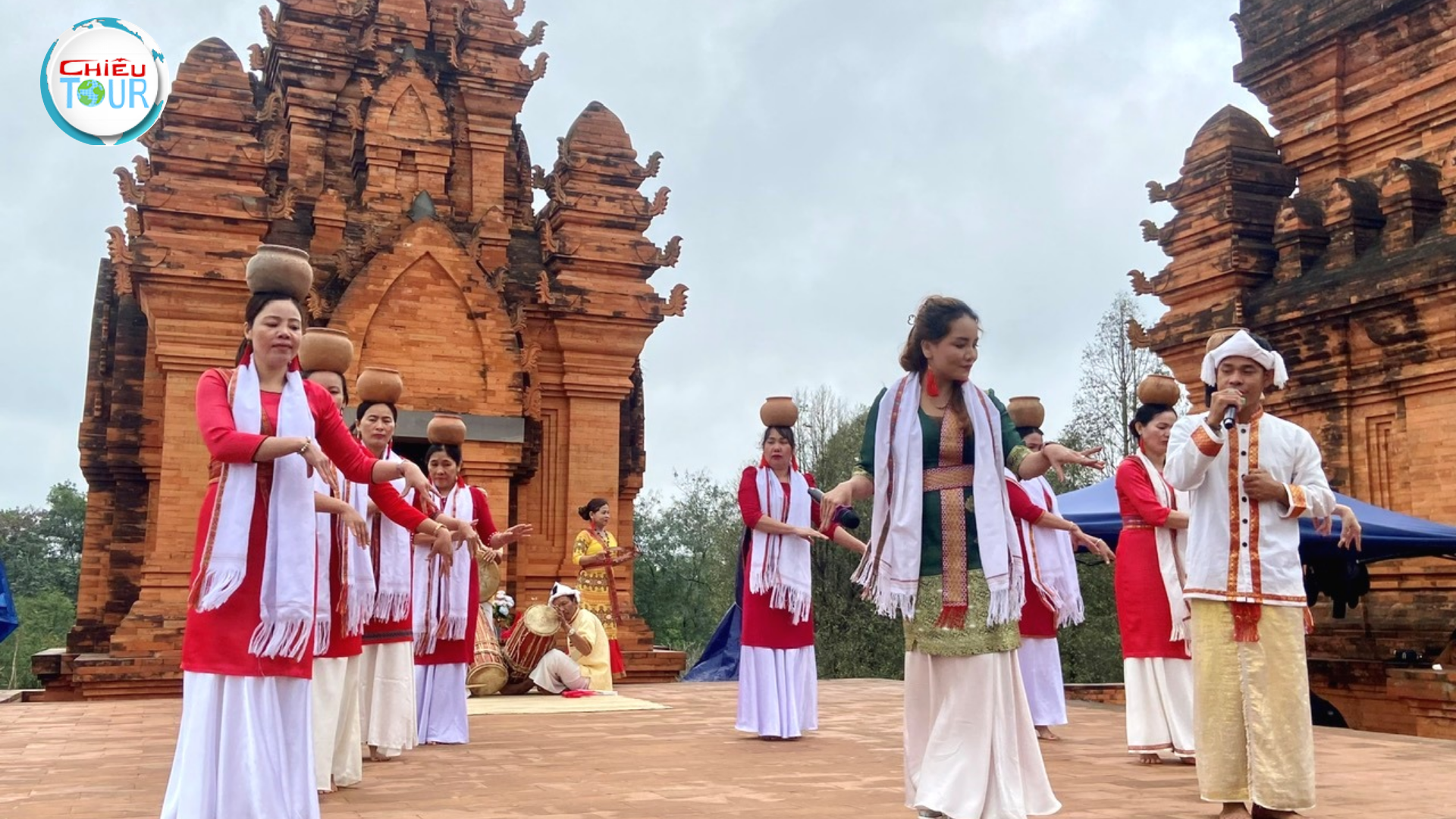Cham Towers: The Hidden Gem of Central Vietnam
- Author: Admin
- | Travel news
Central Vietnam is home to an array of breathtaking landscapes, rich cultural traditions, and historical treasures that tell the story of its past. Among these treasures are the Cham Towers, a collection of ancient structures that showcase the remnants of the Champa Kingdom—one of Southeast Asia’s most fascinating civilizations. The Cham Towers, with their stunning architectural designs and spiritual significance, are often overlooked in favor of more popular tourist destinations. However, these towers serve not only as a symbol of the Champa heritage but also as a hidden gem waiting to be explored. In this article, we will journey through the history, architecture, cultural significance, and tourism potential of the Cham Towers, illuminating why they deserve a place on every traveler’s itinerary.

I. Introduction
The Cham Towers stand as testaments to the ingenuity and creativity of the Champa civilization, which flourished in Central Vietnam from the 2nd to the 15th century. With their intricate brick constructions, elaborate carvings, and profound spiritual significance, these towers are remarkable examples of Southeast Asian architecture. They have not only held religious importance over the centuries but also speak volumes about the artistic trends and technological advancements of their time.
Referred to as "hidden gems," the Cham Towers remain relatively unexplored compared to other notable sites in Vietnam, such as Ha Long Bay or Hoi An. This underexposure does not diminish their value; rather, it enhances the experience for those who venture off the beaten path. Visitors to the Cham Towers can uncover the rich tapestry of culture and history interwoven into each stone and carving, allowing them to connect deeply with the soul of Central Vietnam.
Overview of Cham Towers
The Cham Towers, built between the 7th and 15th centuries, primarily functioned as temples dedicated to the Hindu god Shiva, reflecting the religious practices of the Cham people. These towers are characterized by their unique architectural features, including red brick construction, ornate sculptures, and symbolic motifs that reveal stories from Hindu mythology. Each tower serves as both a magnificent piece of art and a sacred space for worship, showcasing the deep reverence the Cham people had for their deities.
The location of these towers throughout Central Vietnam—from the bustling coastal city of Nha Trang to the serene hills of Mỹ Sơn—underscores their historical significance as cultural landmarks. As travelers explore these towers, they discover a world where spirituality, artistry, and community converge, enriching their understanding of the region's past.
Hidden Gem of Central Vietnam
While many tourists flock to famous attractions, the Cham Towers offer a less commercialized and more authentic glimpse into Vietnam's culture. Their status as hidden gems means that visitors can experience a sense of tranquility and introspection, free from the hustle and bustle often associated with more popular sites. This aspect makes the towers not just historical artifacts but also places for reflection and connection to the spiritual and cultural heritage of the region.
Additionally, the Cham Towers are often overshadowed by contemporary tourist hotspots. Yet, this obscurity adds to their allure, inviting curious souls who seek to uncover the stories etched into their walls. Just like a rare jewel, they sparkle with beauty, waiting to be discovered by those willing to dig deeper into Vietnam's rich history.

II. Historical Background of Cham Towers
Understanding the Cham Towers requires delving into the origins of the Champa civilization, which rose to prominence in Central Vietnam long before it became a part of modern-day Vietnam. The history of these towers is intertwined with the rise and fall of the Champa Kingdom, a powerful maritime state that flourished along the coast of what is now Vietnam.
Origins of the Cham Civilization
The Champa Kingdom emerged around the 2nd century AD, heavily influenced by Indian culture and religion. The Champa people were skilled seafarers and traders, establishing networks that connected them with India, China, and the wider Southeast Asian region. This interaction led to the adoption of Hinduism and later Buddhism, which became integral to the Cham identity.
The establishment of the Cham Towers coincided with the peak of the Champa civilization. As the kingdom expanded, so did its religious and cultural expressions, leading to the construction of numerous temples and towers dedicated to various deities. The architectural styles evolved over the centuries, influenced by varying religious beliefs and the socio-political landscape of the region.
As the Champa Kingdom faced decline due to invasions and territorial losses to neighboring states, many of these towers fell into disrepair. Nonetheless, they remain vital links to the past, representing the resilience of a culture that has endured despite the tides of history.
Religious and Cultural Significance
The Cham Towers served primarily as temples dedicated to the Hindu god Shiva, reflecting the religious practices of the Champa people. Each tower was designed to embody the divine presence, acting as a conduit for worship and reverence. The intricate carvings that adorn the towers depict scenes from Hindu mythology, encompassing deities, celestial beings, and symbolic motifs that illustrate the Cham people's beliefs and values.
The ceremonies and rituals conducted at these towers were essential to the social fabric of the Cham society. Festivals celebrating various deities attracted thousands of devotees, reinforcing communal ties and affirming cultural identity. Even today, these practices continue, signifying the enduring legacy of the Cham civilization and their deep-rooted spirituality.

Timeline of Construction
The construction of the Cham Towers spanned several centuries, starting from the 7th century and continuing until the 15th century. Each period of construction saw variations in style and technique, reflecting changes in religious beliefs and architectural trends.
The early towers, such as those found at Mỹ Sơn, exhibit influences from Indian architecture, characterized by square bases and pyramidal roofs. Later constructions embraced a more distinct Cham aesthetic, incorporating intricate brickwork and elaborate sculptures. Despite facing challenges such as natural disasters and conflicts, many of these towers have survived, standing as witnesses to a bygone era.
III. Architectural Significance
One of the most striking aspects of the Cham Towers is their unique architectural style, which sets them apart from other regional structures. Their design embodies a blend of artistry, engineering, and spirituality, creating an awe-inspiring atmosphere that captivates visitors.
Unique Architectural Style
The Cham Towers are primarily constructed using baked red bricks, notably without the use of mortar. This technique, known as “dry masonry,” showcases the advanced skills of Cham builders. The precise arrangement of bricks allows for flexibility and stability, enabling the towers to withstand the test of time.
Intricate carvings and decorative motifs adorn the exterior of the towers, depicting scenes from Hindu myths, floral patterns, and animal figures. These artistic elements not only serve aesthetic purposes but also convey spiritual meanings, telling stories of creation, divinity, and transcendence. The detailed craftsmanship exemplifies the dedication of the Cham artisans, emphasizing the cultural significance of their work.
Comparisons to Other Southeast Asian Architecture
While there are similarities between the Cham Towers and other Southeast Asian architectural styles, such as those found in Cambodia and Thailand, the Cham Towers possess distinct qualities. For instance, while Khmer architecture often features sandstone and elaborate reliefs, Cham structures predominantly utilize red bricks and showcase a unique combination of Hindu and indigenous influences.
Moreover, the orientation and layout of the Cham Towers are indicative of the Champa worldview, often aligning with astronomical phenomena and the surrounding landscape. This thoughtful integration of nature reflects a harmonious relationship between the built environment and the spiritual realm, setting the Cham Towers apart from their regional counterparts.
Structural Details
Among the most notable Cham Towers are Po Nagar, Mỹ Sơn, and Po Klong Garai. Each structure boasts unique characteristics that reflect the architectural prowess of the Champa civilization.
Po Nagar Tower, located near Nha Trang, consists of several towers that form a temple complex dedicated to the goddess Po Nagar. The central tower, towering above the others, stands as a remarkable example of Cham architecture, featuring beautiful carvings and a vibrant history of worship.
Mỹ Sơn, a UNESCO World Heritage Site, showcases a series of red brick temples set against a lush jungle backdrop. The site comprises multiple towers, each possessing distinct features and artistic details that narrate the evolution of Cham architecture.
Po Klong Garai, situated in Phan Rang, distinguishes itself with its imposing size and intricate terracotta sculptures. The site symbolizes the artistic achievements of the Cham people while serving as a prominent place of worship.
IV. Notable Cham Towers in Central Vietnam
Central Vietnam is adorned with remarkable Cham Towers, each contributing to the rich tapestry of the country’s cultural heritage. Among these, Mỹ Sơn Sanctuary, Po Nagar Tower, and Po Klong Garai stand out as significant historical landmarks that continue to captivate visitors.
Mỹ Sơn Sanctuary
The Mỹ Sơn Sanctuary is a UNESCO World Heritage Site renowned for its extraordinary collection of Cham Towers and temples. Nestled in a lush valley surrounded by mountains, the sanctuary provides a serene backdrop for exploring Cham history.
This archaeological site consists of over seventy structures, some dating back to the 4th century. The intricate carvings and monumental sculptures within the sanctuary depict various deities and mythological tales, offering insights into the spiritual life of the Cham people. The sanctuary once served as a ceremonial center, hosting important rituals and festivals that reinforced the community's identity.
Despite the ravages of time and conflict, many buildings in the Mỹ Sơn Sanctuary remain remarkably well-preserved, allowing visitors to witness the grandeur of Cham architecture firsthand. The site serves as a testament to the sophistication of the Champa civilization and its contributions to Vietnam's cultural heritage.

Po Nagar Tower (Nha Trang)
The Po Nagar Tower, located in Nha Trang, is one of the most significant Cham structures still in use today. This temple complex, dedicated to the goddess Po Nagar, attracts both devotees and tourists alike, making it a vibrant hub of cultural and spiritual activity.
The complex consists of four main towers, with the central tower reaching an impressive height. The interior features a statue of the goddess, surrounded by offerings from worshippers, reflecting the living tradition of Cham spirituality. The annual festival at Po Nagar gathers thousands of participants, underscoring its importance as a religious center.
Visitors to Po Nagar Tower are drawn not only to its architectural beauty but also to its spiritual ambiance. The serene surroundings and the sound of ritual prayers create an atmosphere that invites contemplation and connection to the divine.

Po Klong Garai and Po Rome Towers
The Po Klong Garai Tower, located in Phan Rang, stands as an iconic representation of Cham architecture. Dedicated to the deity Po Klong Garai, the tower showcases intricate carvings and beautifully crafted brickwork that exemplify the artistic mastery of the Cham builders.
Alongside Po Klong Garai lies the Po Rome Tower, another significant structure that embodies the cultural heritage of the Cham people. Both towers serve as cultural landmarks, preserving the memory of a civilization that thrived in the region for centuries. Festivals and rituals continue to take place here, reinforcing the connection between past and present.
The accessibility of these towers offers an excellent opportunity for visitors to delve into the Cham heritage, allowing them to appreciate the craftsmanship and devotion that went into their construction.

V. The Cultural Legacy of Cham Towers
The Cham Towers are not merely relics of the past; they represent a living cultural legacy that continues to thrive in the present. From ongoing religious practices to the influence on Vietnamese culture, the towers serve as vibrant reminders of the Champa civilization's enduring impact.
Religious Practices
Religious practices rooted in the Cham heritage remain vibrant today, particularly at the Cham Towers. Rituals, festivals, and ceremonies continue to attract both local devotees and tourists, fostering a connection between the past and contemporary spiritual life.
The annual Po Nagar Festival, celebrated at the Po Nagar Tower, draws thousands of participants who come to pay homage to the goddess and engage in communal festivities. The event features traditional music, dance performances, and offerings, allowing attendees to immerse themselves in the rich cultural fabric woven by the Cham people.
These practices reflect the enduring significance of the Cham Towers as sacred spaces where spirituality, community, and culture intersect. The towers serve as vessels for preserving traditions and sharing the Cham identity with future generations.

Influence on Vietnamese Culture
The Cham Towers have left an indelible mark on Vietnamese culture, influencing local traditions, art, and architecture. The intricate designs and motifs found in the towers have inspired various forms of artistic expression, from sculpture to textiles.
Elements of Cham culture can be seen in local festivals, culinary practices, and even in the language of certain ethnic groups in Vietnam. The legacy of the Champa civilization is preserved through these cultural exchanges, demonstrating the resilience of their heritage.
Moreover, the architectural techniques pioneered by the Cham people have influenced the development of subsequent building styles in Vietnam. The red brick construction and intricate ornamentation continue to inspire contemporary architects and artists, ensuring that the spirit of the Cham civilization lives on.
Ongoing Preservation Efforts
Recognizing the importance of the Cham Towers, local authorities and UNESCO have initiated preservation efforts to safeguard these cultural treasures. Conservation projects aim to maintain the structural integrity of the towers while promoting awareness of their historical and cultural significance.
Efforts include restoration work, educational programs, and community engagement initiatives aimed at fostering appreciation for Cham heritage among local residents and visitors alike. By involving the community in preservation activities, authorities hope to cultivate a sense of ownership and responsibility toward the towers’ upkeep.
Through these ongoing initiatives, the Cham Towers will continue to stand as symbols of resilience, cultural pride, and historical importance for generations to come.
VI. Tourism and Accessibility
For travelers seeking to explore the hidden gems of Central Vietnam, the Cham Towers offer a one-of-a-kind experience steeped in history and spirituality. Unlike more commercialized tourist destinations, these towers provide an opportunity for authentic engagement with the region's cultural heritage.
Tourist Experience
Visiting the Cham Towers is an immersive experience that transcends mere sightseeing. Upon arrival, visitors are greeted by the serene ambiance and striking beauty of the towers, inviting contemplation and exploration. The intricate carvings, tall structures, and lush surroundings create a sense of wonder that allows visitors to connect with the site’s historical significance.
Engaging with local guides and participating in traditional rituals can further enhance the experience, providing deeper insights into the culture and practices of the Cham people. Travelers can witness firsthand the continued relevance of the towers in modern religious practices, gaining a fuller appreciation for their cultural legacy.
Many visitors report feeling a profound sense of peace and reflection while wandering through the tower complexes, reminding them that these sites are not just historical artifacts but also living spaces of spirituality and community.
Hidden Gem Aspect
Despite their cultural richness, the Cham Towers often remain underexplored, allowing for a unique opportunity to experience the tranquility and beauty of lesser-known attractions. Unlike popular tourist spots that can feel overcrowded and commercialized, the Cham Towers invite travelers to discover a quieter side of Vietnam.
This hidden gem aspect makes visiting the towers all the more rewarding. Travelers can enjoy leisurely strolls through the temple grounds, engage in meaningful conversations with locals, and savor the beauty of the surrounding landscapes without the distractions of mass tourism.
Exploring the Cham Towers grants visitors a chance to step away from the fast pace of travel, encouraging a deeper connection with the history and culture of Central Vietnam.
Practical Information
For those interested in visiting the Cham Towers, practical considerations can enhance the experience. The best times to visit are during the dry season, typically from December to April, when the weather is more favorable for exploration.
Accessing the towers is relatively straightforward, with many located near popular tourist cities such as Da Nang and Nha Trang. Public transportation, guided tours, or private vehicles can be used to reach these sites, making them accessible to a broad audience.
Travelers should also consider engaging with local communities, learning from their stories, and participating in cultural events when possible. This engagement enriches the overall experience and fosters a greater appreciation for the significance of the Cham Towers.
VII. Conclusion
In conclusion, the Cham Towers stand as exceptional symbols of the Champa civilization's cultural and historical significance. These architectural marvels encapsulate the artistry, spirituality, and resilience of a people whose legacy continues to thrive in Central Vietnam.
As hidden gems, they offer a unique opportunity for travelers to immerse themselves in an authentic cultural experience, far removed from the noise of mainstream tourism. The continued religious practices, ongoing preservation efforts, and rich historical narratives associated with the towers reinforce their importance as cultural landmarks.
We encourage readers to visit the Cham Towers and explore the profound beauty and history they hold. By doing so, you not only honor the legacy of the Champa civilization but also contribute to the ongoing appreciation and preservation of Vietnam's diverse cultural heritage. The Cham Towers await your discovery—step off the beaten path and uncover their secrets!
 Vietnam
Vietnam 





